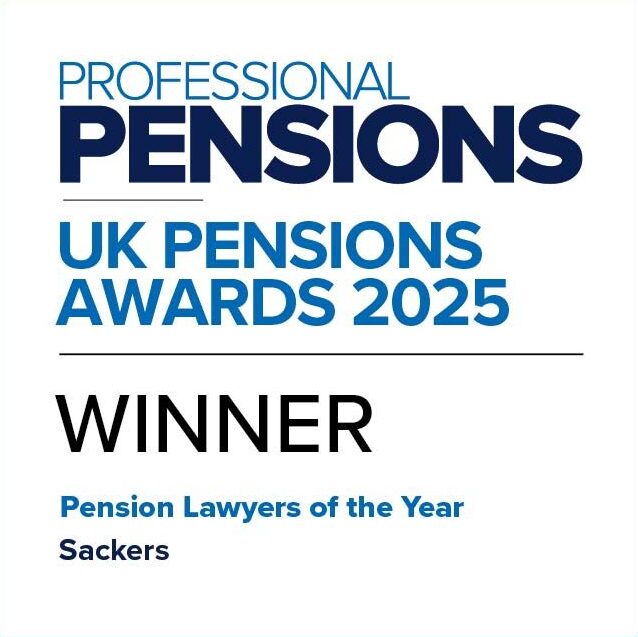Background
The HMRC has issued a technical consultation on Inheritance Tax (“IHT”) on pensions: liability, reporting and payment.
In this response
Responses to specific consultation questions and related comments
We welcome the opportunity to respond to this consultation. In addition to answering specific consultation questions which are pertinent to our practice, or which we believe could give rise to difficulties in practice for our clients, we have provided some initial general comments about clarifying the scope and the policy intent of the proposals.
In addition, as death benefit provision in public sector pension schemes differs from that in the private sector, we have set out some background on this which we hope will be generally helpful and will provide context for our comments.
A. Death benefits in private sector occupational pension schemes
1. Trustee duties in relation to discretionary death benefits
An understanding of trustee duties in respect of discretionary death benefits is key to an appreciation of why the proposed timings will be extremely difficult to achieve in practice.
Where a lump sum death benefit is paid out on a “discretionary” basis, this means that the trustee decides which beneficiary (or beneficiaries) should receive the lump sum. Whilst the member can indicate who they would like to receive the benefits (in a nomination, or expression of wishes, form) this is not binding on a trustee. Trustees must go through a proper process before paying out a death benefit, including –
- Notification of death
Even where schemes have regular mortality screenings and regular tracing exercises, there are deaths that may go undetected for some time, particularly for a long-since deferred member (who may have moved multiple times and / or changed name) or for those members who reside overseas, where there can be administrative difficulties in proving a death.
It is commonly the case that the individual who notifies a scheme of an individual’s death is not the PR.
- Finding out who the potential beneficiaries are
Scheme rules generally cast the net widely on who may receive a discretionary death benefit, and trustees must then gather all relevant information about the potential beneficiaries. This includes any expression of wishes form, as well as evidence of who falls within the “net” of the rules, and financial dependency or interdependency on the member. This is typically sought by issuing the person who informs the scheme of the death with a form to complete. Delays can occur where potential beneficiaries fail to respond to the trustees.
- Considering all relevant factors and making a decision
The expression of wishes form is just one factor, though depending on how recent it is, it may have more or less weight attached to it. The specifics of the relevant domestic situation eg previous marriages, children from different partners, status of any current partner, overseas beneficiaries and so on, can mean that further clarification is needed, and that it is more likely that a decision will take longer.
This process can be relatively quick where the PRs and potential beneficiaries are prompt to respond to queries, and the member’s domestic situation is straightforward. However, this process can take many months, or even years, through no fault of the trustees. This potentially lengthy process is recognised in pension tax rules where, depending on the member’s age, there can be tax consequences if death benefits are paid outside of a two-year period beginning with the later of the trustee becoming aware of the member’s death and the date when they could first reasonably have been expected to be aware of it.
These processes go to the heart of a trustee’s fiduciary duties. It could amount to a breach of these duties if a trustee were to follow the suggested IHT time limits and rush this process or make a decision without knowing the full facts of the case. Many cases that go to the Pensions Ombudsman concern trustee failure to properly exercise powers to distribute death benefits.
There is an additional complicating factor in relation to IHT which is that if the ultimate beneficiary is the member’s spouse, our understanding is that IHT will not be due on the death benefit lump sum even under the proposed changed regime. This means (a) that it will often not be known whether IHT is in fact due until the trustee’s discretionary decision is made and (b) the tax implications could be a complicating factor in the trustee’s decision.
2. Arrangements for paying out death benefits
Employers in the private sector can pay death benefits out of a variety of vehicles, including:
- DB occupational pension scheme (ie paying out DB dependants’ pensions, as well as lump sum death benefits), on a self-insured basis (ie funded by the general assets in the scheme)
- DB occupational pension scheme (as above), with an underlying insurance policy funding any death benefit payments
- DC occupational pension scheme (ie members build up DC pots, with guaranteed death benefits also being provided), with an underlying insurance policy
- DC occupational pension scheme (ie members build up DC pots, with guaranteed death benefits also being provided), where the death in service lump sum is funded in various different ways, including by members’ pots being utilised to provide the lump sum and/or through surplus assets/payment from the reserve account (rather than funded by insurance)
- standalone life cover only scheme (ie only lump sum death in service benefits are paid out), with an underlying insurance policy
- personal accident schemes (ie paying out in the event of injury or death in the workplace), with an underlying insurance policy.
Employers may also use an excepted group life scheme but, as this is not a registered pension scheme, we understand it is not in scope of these proposals (paragraph 1.13) so we do not discuss them any further.
3. Distinction between lump sum and dependant scheme pension not as clear in private sector
In public service schemes (eg the NHS), death benefits generally consist of both (a) a lump sum and (b) a dependant’s scheme pension. We understand that the lump sum death benefits are generally non-discretionary, ie the rules set out who the death benefit must be paid to, and fall within an individual’s estate for IHT purposes (paragraph 2.7). In contrast, the dependant’s scheme pension payable is currently out of scope of IHT and the intention is for this to remain the case after the changes (paragraph 2.13). However, there is not such a clear divide in the private sector –
- Higher lump sum to compensate for lack of dependant’s scheme pension
A dependant’s scheme pension is now much more of a rarity in the private sector, mainly due to the shift to DC benefits. DB schemes tend to provide both a discretionary lump sum death benefit and a dependant’s pension. When employers closed these, they considered death benefits alongside future pension provision. Moving away from DB benefits and the uncertain costs associated with them, many employers offered more generous death benefit lump sums to compensate for the loss of a dependant’s scheme pension. Whilst four times salary is commonplace (and more than the three times salary in the public service), this can be much more generous for some employers and sectors – six, eight and even twelve times salary are all death benefits that we have seen among our clients.
- Flexibility in scheme rules around a dependant’s scheme pension
In applying a similar approach to the private sector, paragraph 2.13 states that pension benefits will remain outside of the scope of IHT “where funds can only be used to provide a dependant’s scheme pension” (our emphasis). However, the discretionary nature of occupational pension schemes means that this is a high hurdle to meet in practice, as scheme rules are often drafted to give flexibility to trustees (whether to pay a dependant’s pension as a lump sum or vice versa), even if the flexibility isn’t used in practice. This might be by way of flexibility that allows a dependant to opt for lump sum in place of pension, or by allowing them to opt that a large lump sum (for example, eight times salary) could be applied in part to provide a pension, and part as a lump sum.
B. Clarification on scope and policy intent of the proposals
1. Insured vs self-insured
The consultation proposes that all pension death benefits will be included in the value of an individual’s estate for IHT except (a) a dependant’s scheme pension and (b) charity lump sum death benefits. However, the end of Appendix B states:
“All life policy products purchased with pension funds or alongside them as part of a pension package offered by an employer are not in scope of the changes in this consultation document”.
It is not clear what this is intended to cover, and it is essential that the industry fully understands what is in and out of scope to plan accordingly for the changes. It would also be helpful if the underlying rationale could be explained and that thought be given to ensure the underlying rationale can be applied consistently across the various types of arrangements / benefit structures.
Would the life cover exemption cover all of the vehicles in the bulleted list in section 2 above, other than the DB scheme which self-insures and where the DC scheme is funding the benefit by a means other than insurance (ie bullets 1 and 4)? If so, it would be helpful to understand the policy intent of capturing such a scheme, where the death benefits paid out are such a small proportion of the scheme assets, that there is no tangible tax relief related to them.
If the exception only covers some (or none) of the arrangements listed, it is important for HMRC to give clarity to the industry on exactly what is covered, and what the policy intent is for including (or excluding) certain types of provision.
2. Death in service benefits
We understand that the proposals are intended to:
- “ensure that tax reliefs on pensions are being used for their intended purpose – to encourage saving for retirement and later life” (paragraph 1.3), and
- “deliver a fairer and less economically distortive tax treatment of inherited wealth and assets” (paragraph 1.6).
Death in service benefits are a common benefit offered to employees as part of an employer’s wider benefits package, providing vital financial support to an individual’s dependants if they die. Although an individual may include these in their financial plans, this would be more in terms of ensuring their family would be appropriately provided for should they die unexpectedly and their income is no longer available, rather than estate planning / management of potential IHT liability. We understand that, in practice, lump sums are often used to meet household bills, rent or mortgage payments and to assist in other ways as the family adjusts financially following the death of the member.
Bringing these sorts of benefits within scope of IHT does not appear to be in line with the stated policy aims and we would welcome clarity on this point.
If death in service benefits are intended to be in scope, it is not clear whether they remain in scope if there is an insurance policy sitting behind the benefit or why such a distinction would be made (see above).
3. Alignment with IHT treatment in public service schemes
As explained above, a death in service lump sum (where this is a multiple of salary), particularly in a DC scheme, is often of higher value than for a member of a public service scheme on an equivalent salary as, in the private sector, there is often no dependant’s scheme pension payable. It doesn’t seem aligned with the aim of creating fairer tax treatment for dependants’ scheme pensions to fall outside IHT but for higher value lump sums, which are often paid to compensate for the lack of pension, to fall within scope.
The proposal that pension benefits will remain outside of the scope of IHT where funds can only be used to provide a dependant’s scheme pension will, in practice, exclude many dependants’ scheme pensions, as scheme rules are often drafted to give trustees flexibility, even where that flexibility isn’t used in practice (see section A.3 above). This means that a dependant’s scheme pension could fall within scope of IHT on a technicality, which doesn’t seem in keeping with the aims of the proposals.
4. Dependants’ annuities
Annex B to the consultation suggests that dependants’ annuities fall within scope of the proposals. As an annuity would pay a regular income to the beneficiary, it isn’t clear to us why this is being treated differently from a dependant’s scheme pension. It also isn’t clear how these annuities would be valued for the purposes of IHT, particularly where a standalone dependant’s annuity (or even a joint annuity) is purchased before the member’s death.
Responses to specific questions
Question 1: Do you agree that PSAs should only be required to report unused pension funds or death benefits of scheme members to HMRC when there is an Inheritance Tax liability on those funds or death benefits?
Yes, this seems a pragmatic approach to take.
Question 2: How are PSAs likely to respond if they have not received all the relevant information from the PR to pay any Inheritance Tax due on a pension by the 6-month payment deadline?
If the PR has failed to provide all of the relevant information to the PSA, then it is difficult to see how it could pay IHT without breaching its trustee duties and responsibilities towards the beneficiaries. The PSA would simply not be in a position to identify the tax due and any estimate could be too low (leading presumably to a breach of requirements to account accurately to the tax authorities) or more likely too high (leading to difficulty for the beneficiary which appears incompatible with trustee duties). Under the current proposals this could lead to interest charges and potential penalties.
It is not clear whether the late payment interest could be paid from the death benefit, or whether it would have to be satisfied from other assets of a scheme. We assume it would be paid from the death benefit itself but if this is not the case, then there should be an exemption where the delay is not the PSA’s fault. As mentioned below, the PSA is reliant on others at various stages of this process, so shouldn’t be penalised where the fault lies elsewhere.
There are instances where the complex nature of the death benefits means it can take several years to determine the beneficiaries after notification of death. The accrual of late payment interest in such cases does not seem appropriate, not least because it could ultimately exceed the value of the death benefit. If interest accrual is unavoidable, in such cases, we would suggest that it be capped at the value of the death benefit in question.
Question 3: What action, if any, could government take to ensure that PSAs can fulfil their Inheritance Tax liabilities before the Inheritance Tax payment deadline while also meeting their separate obligations to beneficiaries?
As explained in our opening comments, trustees have to follow a proper process when distributing death benefits, which can take months, or even years. Given these duties, our preference would be for the IHT to become payable within a set period (eg six months) of the beneficiary having been confirmed, ie once the trustee has made the decision who to pay the death benefit to. This would ensure that trustees can still go through the proper process in identifying the beneficiaries for discretionary benefits. It would also ensure that death benefits would not be “eaten away” by late payment interest, either where the decision-making process has taken some time, or where the trustees hadn’t been informed of the member’s death.
If HMRC is concerned that this could lead to unacceptable delays in receiving IHT and it is not attractive / feasible to provide different deadlines and / or penalties for late payment for pension and non-pension assets, then as an alternative, we would suggest that the timings for payment of IHT are aligned with the pension tax rules for payment of death benefits, ie within two years of the trustee becoming aware of (or when they could first reasonably have been expected to be aware of) the member’s death. This would sit alongside the separate obligation to satisfy any IHT liability before the death benefit is paid out. This acknowledges the proper process that trustees have to go through, but still sets a time limit on payment for late interest to start accruing, to recognise the delay of payment to HMRC. See also the “Alternative process” we propose in our response to question 7.
Question 5: Do you agree that 12 months after end of the month in which the member died is the appropriate point for their beneficiaries to become jointly and severally liable for the payment of Inheritance Tax?
No. We believe the liability to pay any IHT should be linked to whether the death benefit has been paid out or not, so that once the benefit has been paid out, liability for any further IHT should pass to the beneficiary, as they will have the funds to pay the IHT. The PSA would then be discharged from any further liability in relation to IHT, as the scheme would not have any assets linked to that death benefit to fund any further IHT payment.
See our response to question 8 for our thoughts on when PSA liability should start to run from.
Question 6: What is the most appropriate means of identifying or contacting beneficiaries if either the PR or HMRC realises that an amendment is needed after Inheritance Tax has been paid? Should PSAs be required to retain the details of beneficiaries for a certain period?
Schemes would generally hold that information for a significant length of time in any event, generally falling away on a buy-out or winding up of the scheme. If PSAs are required to retain the details of the beneficiaries for a set amount of time, then there should be an express acknowledgement that they are under no obligation to keep this information up to date or to review it, ie it is a snapshot in time of the contact details of the beneficiary at the date the payment was made. Otherwise, this creates a disproportionate burden on PSAs to keep this information up to date, for no benefit to scheme members.
Question 7: What are your views on the process and information sharing requirements set out above?
The proposed process has several steps that rely on the prompt provision of information. Despite the best efforts of those involved, this doesn’t reflect our experience in a significant number of death benefit cases across our clients. This means that delays in the payment of death benefits would be likely under the proposals, which could cause distress to the surviving beneficiaries, as well as administrative complexity for schemes and the PRs.
We are particularly concerned that the proposed process involving PRs would impact the payment of all death benefits from a scheme, not just complex cases or those where IHT is payable, whether there is an appointed PR or not:
- PR has been appointed
As mentioned above, it is quite common for the person notifying the scheme not to be the PR. This generally doesn’t matter under current practice, as discretionary death benefits sit outside the estate.
However, under the proposals, trustees will need to identify, and liaise with, the PR. This will add time to the process, as trustees will have to identify, and then verify, the identity of the PR. Generally, there will be no existing relationship with the PR, which can make the exchange of information more difficult. Further, the PR often isn’t a professional, which means this process will be new to them, increasing the likelihood of mistakes being made and potential delays.
- PR hasn’t been appointed
Whilst this strays beyond our area of expertise, we are aware that a significant proportion of estates don’t need to have a PR in place, eg where the estate is made up of a small amount of money, or money and property are held jointly. However, under the proposals, estates will now need to appoint a PR to go through this process with the individual’s pension schemes, even if the funds are much lower than the IHT threshold. We envisage that this will cause delays to payments and will introduce a disproportionate administrative burden on the member’s estate, at what is already a difficult time for the bereaved.
Whilst some death benefit cases can take months or years to process, there are much more straightforward cases where the benefits are paid within weeks. We have heard from our clients that the availability of these funds can make a huge difference to the member’s survivors, particularly where the death was unexpected. We are worried that the proposed approach could have a detrimental impact in such cases.
Notification of beneficiary
The proposals are predicated on the PSA being able to identify who the beneficiary is going to be fairly early on in the process. As explained in our general comments, the identification of the beneficiary in a discretionary death benefit case can take some time, even where there is a valid expression of wishes form in place.
Alternative process
With the aim of minimising delays and the risk or errors we would suggest the following as an alternative:
- PSA only becomes liable when set conditions are met
Paragraph 2.17 explains that requiring IHT to be paid directly from pension schemes prevents additional income tax liability becoming due on the funds used to pay the IHT. However, in a large number of cases, the death benefit wouldn’t be in scope of income tax, provided the member had sufficient headroom in their Lump Sum and Death Benefit Allowance and that certain other conditions are met (eg the member was under age 75 and the payment was made within the two-year payment period).
To keep things administratively simple for pension schemes and given the risk of income tax liability is limited, we suggest that the liability remains with the PR (as is currently the case) unless certain conditions are met, in much the same way as is the case for the annual allowance charge and the use of scheme pays to satisfy that charge. For example, the liability only falls on the PSA once they have been informed of (a) the death and (b) the identity of the PR, and the value of the benefits are over a set threshold.
- Introduce a de minimis threshold
HMRC sets an amount under which the PSA would pay out any death benefit assuming no IHT is payable. This would ensure that small death benefits could be made promptly. If any IHT should have been paid, then the beneficiary would be liable to pay that to HMRC. The PSA could be required to report the payment to the PRs (if any) for them to take it into account when they determine the estate’s IHT liability.
- PRs to confirm that no IHT is payable
PSAs have little or no visibility of the rest of a member’s estate and the size of the death benefit may bear little resemblance to the value of the estate as a whole. For example, the estate could be very small but with a large death benefit, or, in contrast, there could be a large estate but only a small death benefit payable. Where it is clear to the PR that no IHT will be payable, there could be a process by which they can give a confirmation to the PSA that no IHT will be payable, and the PSA can then rely on that confirmation and pay out the death benefit free from IHT. If it subsequently turns out that IHT should have been payable, liability for this would fall on the PR / beneficiary, not the scheme.
- Pay out the death benefit but hold back any potential IHT
Where the PRs haven’t given a confirmation in line with the bullet above, and the death benefit is over a set de minimis level, then PSAs could simply deduct IHT at the full 40% from the death benefit. The PSA would then hold those monies in the scheme until the PR confirms the amount of IHT payable (if any) at which point the PSA could make the appropriate payments.
Under these alternatives, the PSA is discharged of any liability to pay IHT when the death benefit has been paid to the beneficiary.
Question 8: Are there any scenarios which would not fit neatly into the typical process outlined above? How might we address these?
We have generally raised scenarios that don’t “fit neatly”, including lack of PR, complex decisions and delay on information in our responses above. Our only additional thought would be to query whether trivial commutation death benefit lump sums should be excluded from the proposals. The intention behind such lump sums is to allow schemes to pay out small benefits as a lump sum, given the disproportionate administrative work associated with keeping them in a scheme as pensions. Bringing these in scope of the proposals would negate the administrative advantages of making these payments. These may also be made some time after the death to which the pension being commuted relates (as there is no time limit as to when they can be paid) and so potentially long after the estate has been settled.
Question 9: Do you have any other views on the proposal to make PSAs liable for reporting details of unused pension funds and death benefits directly to HMRC and paying any Inheritance Tax due on those benefits? Are there any feasible alternatives to this model?
We have fed in our other views throughout our response but see question 7 for our thoughts on alternative approaches.
Our only additional point would be to flag that there is already a capacity issue for administrators, who are dealing with significant changes in the pensions industry, such as GMP equalisation, pensions dashboards and the removal of the LTA, on top of day-to-day work. Increasing the workload on administrators will be challenging and could increase the risk of mistakes and delays.







